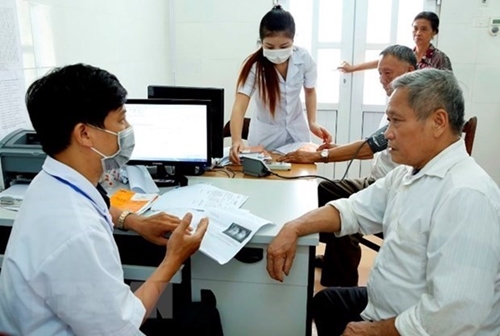She made the instruction at a conference in Ho Chi Minh City on April 16 to review the three-year implementation of the target program.
It was affirmed at the conference that under the program, a wide-spread network of health care facilities has been built, contributing to the control of newly emerging diseases, the prevention of big epidemics, and the reduction in patient numbers and fatalities.
    |
 |
|
Developing grassroots healthcare to prevent non-infectious diseases is the top task of the health-population target program for 2016-2020. |
Thanks to the program, the country has maintained a vaccination rate of more than 95 percent for children under one year old and pregnant women. The malnutrition rate among children dropped to 13 percent in 2018 from 17.5 percent in 2010. The rate of HIV/AIDS in the community has been kept at 0.3 percent with fewer number of new infection cases.
However, Minister Tien pointed to the increasing threat of non-infectious diseases such as cardiovascular diseases, diabetes and cancer as a new challenge for the program.
At the same time, financial resources for the program, which rely on the State budget, are limited. The health insurance fund currently pays for only medical examination and treatment, and local administrations have not paid proper attention to the program.
The Health Minister stressed that the grassroots healthcare network serves as the “guard” in disease prevention, for both infectious and non-infectious diseases, and at the same time make it easier for people to access medical services.
In the next two years, the Health Ministry will continue to carry out the program, paying attention to training and inspection of professional activities at grassroots health facilities, and communication campaigns to spread the message among the community on the risks of diseases and raise the public awareness about the need to exercise and early detect chronic diseases.
Source: VNA